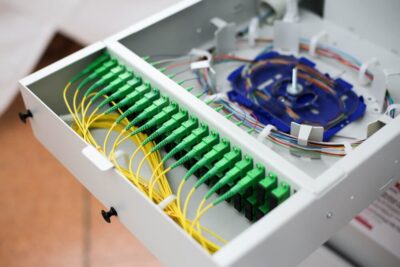Generally, there are three levels of FTTx network planning: strategic, high-level, and detailed. At a strategic level, stakeholders decide to what extent the network should grow and how much to invest in that growth. High-level planning is about structural considerations for each geographic planning area. Finally, during detailed network planning, the “to-build” plan is created.
In this article, let’s talk about high-level FTTx network planning. The goal of this phase is to create the lowest-cost network plan based on the criteria of the strategic plan. This includes an agreed-upon geographic planning area, fiber network design rules, and materials. It is important to calculate and analyze costs for every detail of your project. Whether it’s an FTTH or other fiber build project, you need to optimize every route to minimize equipment and construction work.
What are the top things to consider at this stage?
- The locations of Fiber Distribution Hubs (FDH) and cable sizes
- Connectivity and grouping service areas
- A bill of materials (BoM)
If you have a large planning area, you need to decide on the FDH size(s) and cable sizes for both the feeder and distribution networks. One thing to consider is that a greater number of subscribers per access node location can save you money on energy, maintenance, and aggregate capacity costs but bring higher expenses on longer feeder cables.
If your planning area is small, you will most likely need just one access node. The trade-off here is more about the economic benefit of using an already available location or the ideal location for an access node.
Another element involved in high-level network planning is choosing locations for FDHs and determining which subscriber locations to connect to which FDH. You need to know the fiber counts of the cables and duct systems. To make a more informed decision and minimize deployment costs, analyze both the optimal locations and the nearest existing or available locations for an FDH.
Next, lay out the cable routes. This is one of the most cost-sensitive decisions in your planning. Construction work involved with digging and laying cables and ducts can drive costs way up. A smarter and more efficient way is to use the existing infrastructure (such as empty ducts) and adding new ducts and aerial cables where there are no ducts. For maximum cost optimization, calculate the distance between various deployment routes.
After you decide which cable and duct routes should be used and determine the equipment requirements (such as active switches, splitters, etc.), you should compile a high-level bill of materials. This high-level bill of materials will help you understand if you are tracking toward the strategic plan. The final bill of materials, listing all items in detail, is usually ready during the detailed network planning stage.
It can be challenging to come up with a timely, accurate, and optimized high-level network plan manually. Many service providers and network operators turn to automated high-level planning tools to help them with this step. Nowadays, you can optimize fiber network designs for each specific planning area with engineering and business rules and GIS data by using your high-level design automation tool. You will still be in control of your planning as you make adjustments based on your experience and expertise.
Here at GEOGRAPH, we offer trusted GIS-based solutions specific to your network design and planning needs. Find out more about our team. And reach out to us here, or quickly email us at info@geograph.tech
For help with your FTTx network planning needs, contact us today


